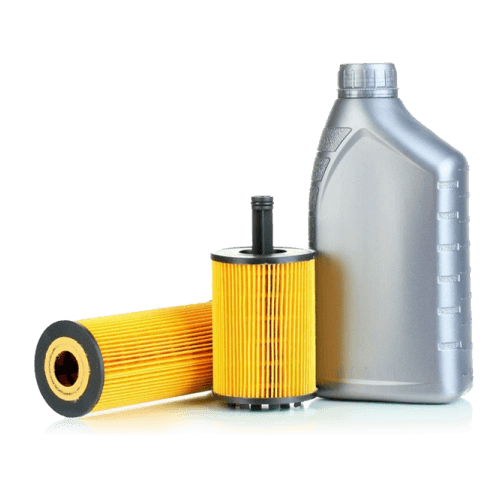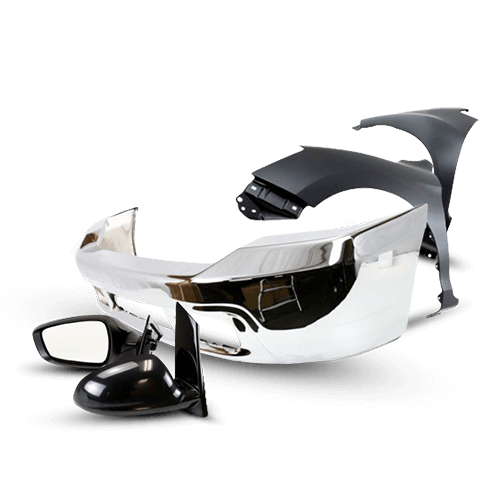
Exploring Different Suspension Types and Their Functions
Suspension systems are critical to a vehicle's overall performance and comfort. A well-designed suspension system provides a smooth ride, improved handling, and increased safety. In this in-depth article, we'll look at two popular suspension systems: the MacPherson suspension and the Multilink suspension. We'll look at their working mechanisms, components, benefits, drawbacks, and more. Whether you're a car enthusiast or a curious learner, come along with us as we explore the functions of Multi link suspension vs MacPherson suspension.
Working of McPherson Suspension
With its unique approach, the MacPherson suspension system revolutionized the automotive industry. Let's take a closer look at how this suspension system works:

The Working Mechanism of the MacPherson Suspension System
The MacPherson suspension, also known as the MacPherson strut suspension, is a popular vehicle suspension system. The MacPherson strut is a multi-component structure that provides structural support as well as shock absorption. This suspension design combines a shock absorber and a suspension arm into a single component known as the strut. The shock absorber is surrounded by a coil spring, with the assembly connected to the vehicle's chassis at the top and the wheel assembly at the bottom.
Introduction of McPherson Suspension System Components
The McPherson suspension system is a testament to ingenuity in the automotive world, providing a combination of structural support and shock absorption. At the heart of this innovation are several critical components, each of which plays a distinct role in creating a smooth and enjoyable driving experience. Let us now introduce the key components of the McPherson suspension system:

Damper
The damper, also known as the shock absorber, is an important component of the MacPherson suspension. It regulates suspension movement by absorbing and dissipating energy generated when the vehicle encounters bumps and uneven road surfaces. This provides the occupants with a stable and smooth ride.
Strut Mount
The strut mount is a connection point between the suspension strut and the vehicle's chassis. It provides support and allows the suspension to move vertically in response to road conditions. Strut mounts play a vital role in maintaining proper alignment and stability, contributing to overall driving comfort.
Coil Spring
The coil spring, located around the shock absorber, absorbs and stores energy as the suspension compresses and extends. This energy is then released to mitigate the effects of bumps and vibrations, resulting in a more balanced and comfortable ride.

Lower Control Arm
The wishbone, also known as the lower control arm, connects the suspension system to the vehicle's chassis. It allows the suspension to move up and down while maintaining proper wheel alignment and control during cornering and braking.
read more: How to Lower Car Suspension? A Comprehensive Guide
Working of Multilink Suspension System
The Multilink suspension system is an engineering marvel, meticulously designed to strike a balance between comfort and performance. Let's go over the various components that work together to create this exceptional suspension system:
The Working Mechanism of the Multilink Suspension System
The Multilink suspension system is a sophisticated design that provides a good balance of comfort and performance. This system connects the wheel hub to the chassis with multiple arms and links, allowing for a high degree of control over wheel movement. The key advantage of the multilink suspension system lies in its ability to independently manage wheel motions, such as camber, toe, and caster angles, which significantly improves road grip, cornering stability, and overall handling.

Introduction of Multilink Suspension System Components
The intricate architecture that translates road imperfections into a smooth ride for passengers is at the heart of every vehicle's suspension system. The multilink suspension system is a complex system of components designed to achieve delicate balance. The multilink suspension system is a sophisticated arrangement of components designed to achieve this delicate equilibrium. The following are some of the most important multilink suspension system components:
1. Upper Control Arms
The upper control arms are vital components in a multilink suspension system. These arms join the vehicle's frame to the upper portion of the wheel assembly, allowing for controlled vertical movement. They are critical in maintaining cornering stability and absorbing road irregularities.
2. Lower Control Arms
Similar to the upper control arms, the lower control arms link the vehicle's frame to the lower part of the wheel assembly These arms work in tandem with the upper arms to improve control over wheel motion, particularly when encountering bumps and potholes.
3. Control Arm Bushings
Control arm bushings serve as cushions between the control arms and the frame of the vehicle. These components contribute to a smoother ride by absorbing shocks and vibrations. High-quality bushings are critical for reducing noise while maintaining comfort.
4. Coil Springs
Most cars have four coil springs, one to support corner of the vehicle's frame. In most cars, coil springs are installed within struts. They don't require maintenance but they can break and need to be replaced. This is essential for ensuring stability and control, particularly during cornering.
5. Shock Absorbers
Shock absorbers, also known as dampers, are designed to control the oscillations of the suspension springs. These components help manage the movement of the suspension system, preventing excessive bouncing and ensuring that the wheels remain in contact with the road at all times.

Advantages of the MacPherson Strut System
The MacPherson suspension system offers several advantages that contribute to its popularity in the automotive industry:
1. Simplicity and Cost-Efficiency
One of the standout advantages of the MacPherson strut system is its simplicity and cost-effectiveness. The integrated design of the strut assembly reduces the number of components and attachment points, resulting in easier manufacturing and assembly processes. This efficiency translates into cost savings for both manufacturers and consumers.
2. Space Efficiency
The MacPherson strut system's compact design makes it a space-efficient solution for vehicles with limited undercarriage space. This advantage is especially useful for compact cars and vehicles with front-wheel drive, where optimizing space is critical.
3. Simplified Maintenance
The MacPherson strut system's straightforward design also extends to maintenance. Because it combines key suspension components into a single unit, diagnosing and replacing components such as the shock absorber and spring can be more convenient and less time-consuming.
4. Low Noise and Vibration
The integrated design of the MacPherson strut system contributes to reduced noise and vibration. The single attachment point minimizes the potential for rattles and other unwanted noises that can arise from multiple components moving independently.

5. Structural Rigidity
The construction of the MacPherson strut system increases the structural rigidity of the vehicle's front end. This added stiffness can lead to improved overall chassis dynamics and a more controlled ride.
Disadvantages of the MacPherson Strut System
While the MacPherson strut system brings forth several advantages in terms of its design and functionality, it's important to acknowledge its limitations as well. Here are some of the disadvantages associated with this suspension system:
1. Limited Adjustability
One of the main drawbacks of the MacPherson strut system is its lack of adjustability. In comparison to more complex suspension systems, such as double-wishbone or multilink systems, the MacPherson strut provides few options for adjusting camber, caster, and other alignment parameters. This can lead to challenges in fine-tuning the suspension to meet specific performance or handling requirements.
2. Ride Comfort
While the MacPherson strut system is adequate for many vehicles, it may fall short of providing a truly plush and refined ride quality. The single-point attachment of the strut to the wheel assembly can result in a less effective absorption of road irregularities, leading to a rougher ride over uneven surfaces.
3. Impact on Handling
The simplicity and space efficiency of MacPherson strut systems are well known. However, this design can have a negative impact on handling dynamics, particularly during aggressive cornering.
4. Reduced Suspension Articulation
In off-road or rugged driving conditions, the MacPherson strut system may face limitations due to its reduced suspension articulation. The strut assembly's compact design may limit the wheel's ability to move vertically, potentially resulting in reduced traction and stability when driving over difficult terrain.
5. Durability Concerns
The MacPherson strut system's single-point attachment design can lead to increased stress on certain components, potentially resulting in accelerated wear and tear. Over time, the shock absorber and the strut assembly may experience premature failure, requiring more frequent maintenance and replacement.
Advantages of the Multilink Suspension System
The Multi link suspension vs MacPherson provides several benefits that cater to both performance-oriented and comfortable driving experiences:
1. Improved Handling
Multilink suspension systems offer superior handling characteristics compared to conventional suspension setups. The multiple control arms allow for precise control over wheel movement, enhancing cornering stability and overall road grip.
2. Enhanced Comfort
Due to the advanced design and the use of multiple components working in harmony, multilink suspension systems provide a more comfortable ride. The system effectively absorbs shocks and vibrations, resulting in reduced impact felt by the passengers.
3. Better Traction
Multilink suspension systems excel at maintaining tire contact with the road surface. This improved tire grip translates to better traction, especially during acceleration and braking, enhancing both safety and performance.
4. Reduced Body Roll
The configuration of control arms in multilink suspension systems helps minimize body roll during cornering. This results in a more stable and controlled driving experience, reducing the sensation of lateral sway.
Disadvantages of the Multilink Suspension System
However, there are limitations to Multi link suspension vs MacPherson. Some of the disadvantages of the multi-link system are discussed below:
1. Complexity and Cost
One of the primary disadvantages of the multilink suspension system is its complexity. The presence of multiple control arms and associated components increases manufacturing complexity, potentially leading to higher production costs. This complexity can also make maintenance and repairs more difficult, potentially raising the total cost of ownership.
2. Maintenance Intensity
While the multilink suspension system's independent wheel movement contributes to enhanced handling and comfort, it can also lead to more intensive maintenance requirements. The various control arms, bushings, and linkages may need more regular inspection and maintenance to ensure optimal performance, making it potentially more demanding for both vehicle owners and technicians.

3. Tuning Obstacles
It can be difficult to optimize the multilink suspension system for a specific balance of handling, comfort, and performance. Tuning the multilink system's numerous components for precise alignment and behavior, in contrast to simpler suspension setups, can necessitate advanced engineering expertise and specialized equipment.
4. Space Constraints
The multilink suspension system's design, while beneficial for performance and comfort, can present space constraints within the vehicle's undercarriage. The arrangement of control arms and linkages may limit the available space for other components, potentially impacting the overall design and packaging of the vehicle.
5. Weight Considerations
Due to the increased number of components, the multilink suspension system can add weight to the vehicle. While modern materials and engineering techniques aim to mitigate this concern, the added weight can affect fuel efficiency and overall vehicle dynamics
It is suggested to read the article "what does suspension do for a car" for more information in this field
Conclusion
In the world of automotive engineering, suspension systems are at the heart of a vehicle's performance and comfort. In a comparison of Multi link suspension vs MacPherson, we must say that the MacPherson suspension is simple and inexpensive, whereas the Multilink suspension provides precise handling and improved ride comfort. Engineers worked for years to perfect these suspension systems as technology advanced, striking a balance between performance, comfort, and innovation.
Finally, it is important to note that if you want to buy parts for each of the McPherson and Multilink suspension systems, the Best Part website will be the best online store to buy car parts, such as car suspension parts.
FAQs
- Are MacPherson struts used in both front and rear suspensions?
Yes, MacPherson struts can be found in both front and rear suspensions of various vehicles. However, their design and application may vary.
- Can I upgrade my vehicle's suspension system to a Multilink suspension?
Upgrading a suspension system is possible, but it's a complex process that requires careful planning and expertise. Consult with automotive professionals for guidance.
- Which type of suspension system is better for off-road driving?
Generally, a Multilink suspension system with its greater wheel articulation and shock absorption capabilities is more suitable for off-road driving.























































